Japanese Attractions: Kana on the PET 2001
The Japanese character ROM and keyboard come to the PET 2001 emulator.
Meanwhile, the PET 2001 emulator received another update. This time, it’s about a tribute to the importance of Japan to the history of home computers in general, and the role it played in the development of (and as a test market for) Commodore computers, in particular.
It may be lesser known, but there was a special Japanese markets variant of the PET 2001, featuring a modified character ROM with Katakana (accessible as shifted characters in what is else the mixed case character set), and this came also with a special keyboard, similar to the chiclet keyboard of the familiar PET 2001.
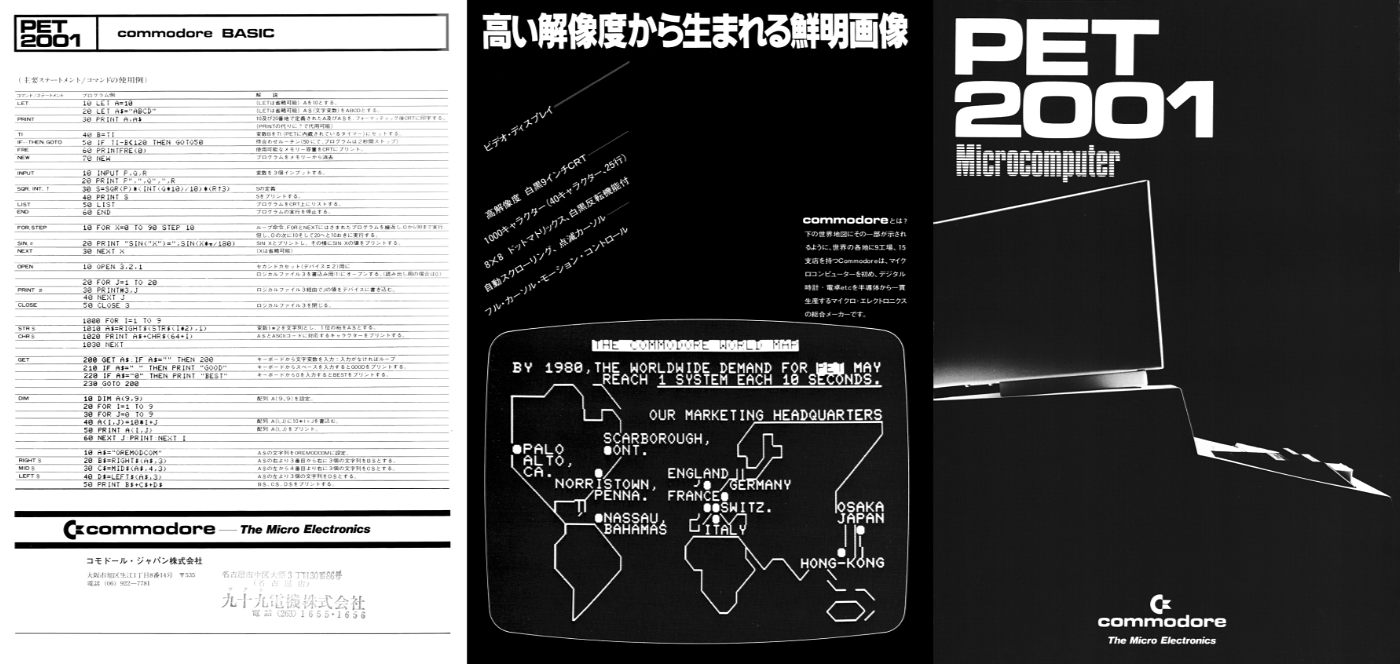
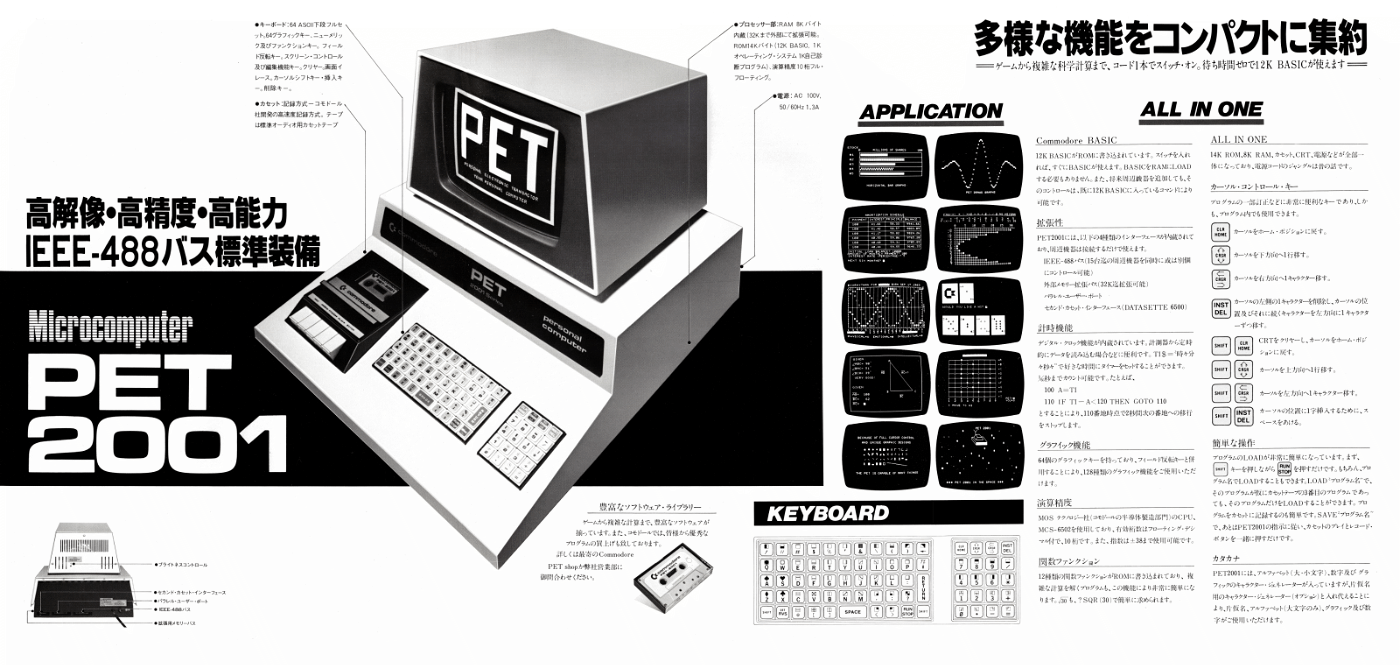
(Interestingly, this brochure shows a PET with the standard Roman keyboard.)

Source: German classifieds (2024); aspect and perspective edited.
Here’s another image of the Japanese keyboard, in lower resolution. Mind the different style of keycaps and what appears to be a color-coded scheme for non-alpha-numeric keys. Also, the entire keyboard assembly appears to be mounted on its own plate.

Image: www4.airnet.ne.jp/mit/Musium/ (enhanced).
Edit: Meanwhile, I’ve come to the conclusion that this really shows a normal keyboard with the ridges of the keycaps hidden in low resolution and what appear to be sharpening artifacts. The enclosing rounded rectangle was probably added in post. But this image also hints at the Japanese variant being shipped with both versions of the keyboard labels, once with mostly white keys as seen above, and once featuring color-coded non-alpha-numeric keys.
Notably, both these versions existed for the Western standard keyboard: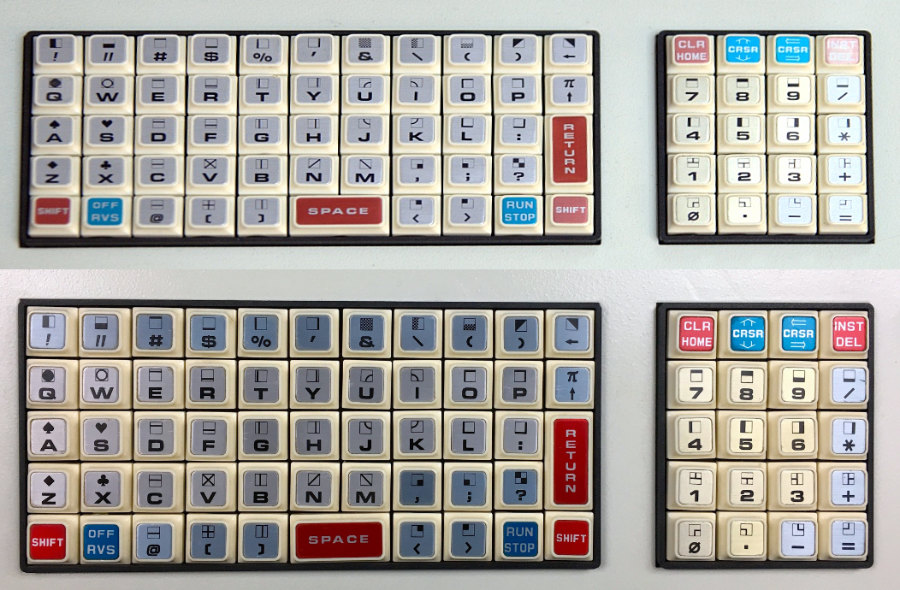
My current theory is that the image in question is actually from an updated (but otherwise unpreserved) version of the very brochure shown above. Not only does the full, original image share the headline and the somewhat misleading frame with the illustration found in this brochure, other images on that site are clearly from the same brochure, as well.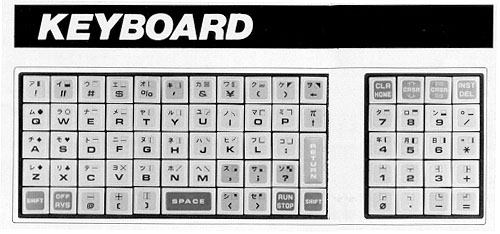
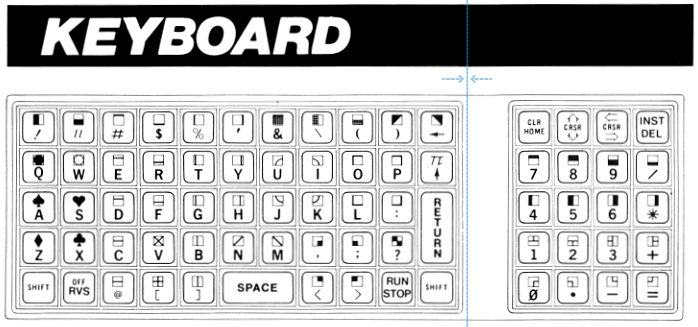
It’s quite plausible that this brochure had been updated at some point and a photo of the katakana keyboard was mounted into the illustration. A further hint may be found in the small irregularities in the rectangular title bar and the enclosing frame, which coincide with the page fold of that brochure. So. I think, we may consider that case closed.
Katakana was available as shifted characters, in the alternative set (Roman upper case/graphics being still the default):
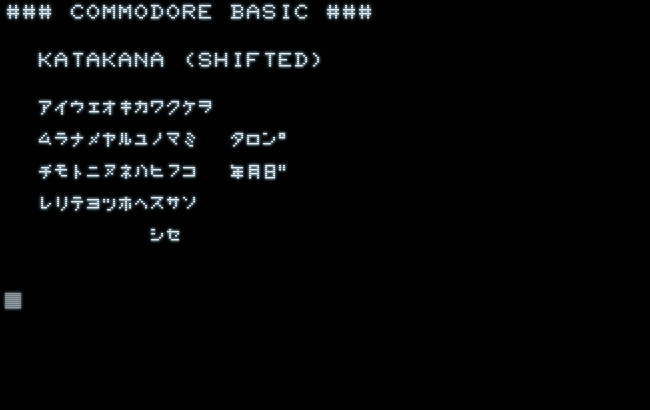
Order as found on the keyboard.
And here is the Japanese character ROM in comparison to the standard PET 2001 character ROM. Additionally to the Katakana shown above, the Yen currency sign (¥) replaces the backslash in both Japanese character sets, much like the British Pound sign (£) would later on the VIC-20 and the C64. And, opposed to the standard character ROM (where it is replaced by a checkerboard character in the alternative set), the Pi character (π) is available in both character sets.
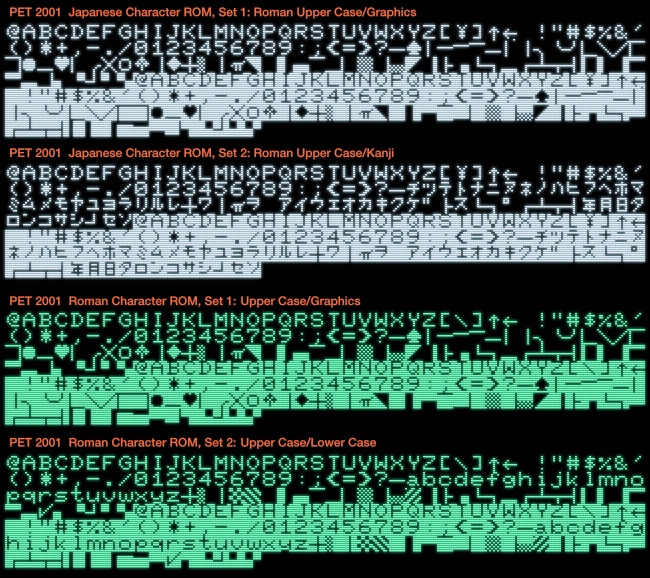
On an Emulator Near You
Both the character ROM and the keyboard layout are now available in the emulator via the context menu of the emulated screen: select the “Japanese Character ROM” and then the “Roman Letters/Kana” option — and here you are. The keyboard below will switch automatically.
(On the occasion, the context menu enjoyed a little brush-up, too, in order to make character sets more easily accessible.)
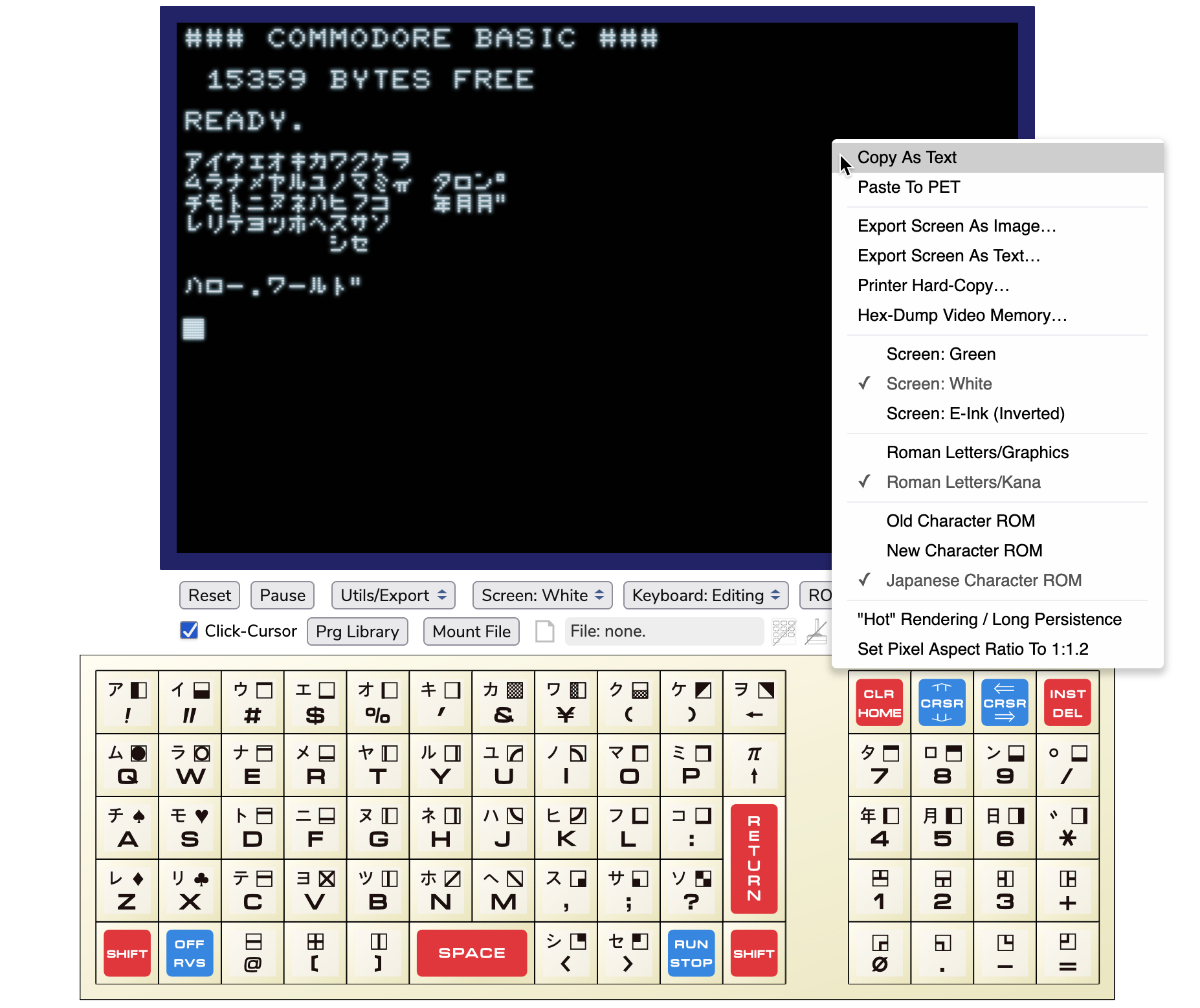
To round things up, the emulator now supports the related Unicode range for input, in any source documents and for copy&paste. In theory, this should also apply for keyboard input. But I’ve to admit that I don’t know much (or anything, really) about the related input methods and how to handle them. If, however, a related Unicode character appears in a keyboard event, this should be handled as the according shifted PETSCII character, when the Japanese character ROM is selected.
Legacy and Further Developments
While Commodore’s layout of the kana didn't follow any standard arrangement, it broke the ground for further implementations, most notably (with minor adaptations) on the VIC-1001, Japan’s precursor to the popular VIC-20, that used the same character set.

Source: Commodore International Historical Society (X/Twitter: @commodoreihs), 2023.
And that’s it, for today.
Norbert Landsteiner,
Vienna, 2024-05-21 (updated 2024-05-22)